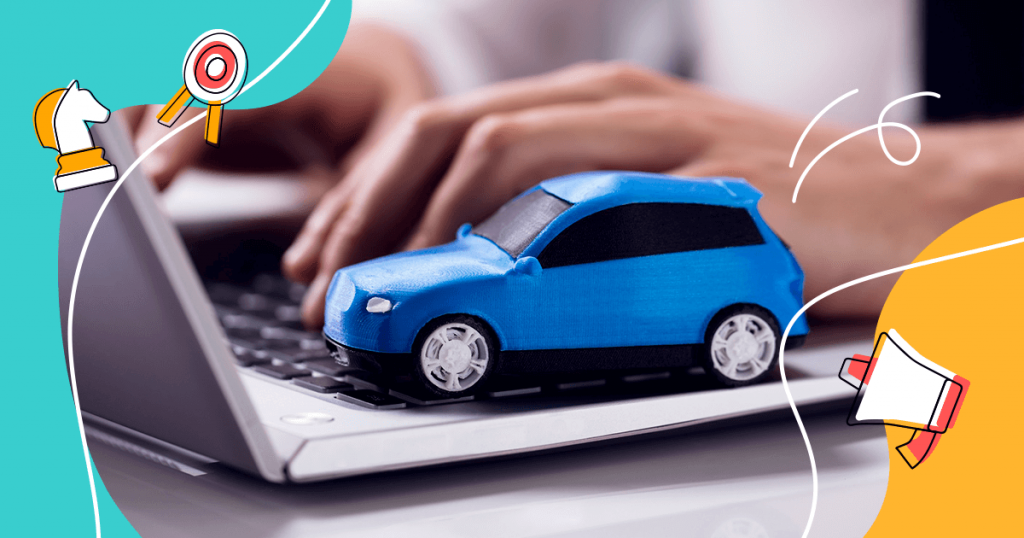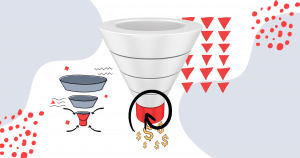Digital marketing is a gateway to brands and services that help guide them as they shop. And, few things are as big of an investment as a new car, so it makes sense that 92% of buyers spend time online doing research.
Modern consumers use the internet as a resource when buying anything. It is probably one of the first places they go when they are considering a new car.
Marketers who work in the automotive industry have a huge responsibility. Their content is not evergreen because new model cars come out every year. That means they have to go back and give marketing assets a makeover regularly.
That’s true if you deal in any aspect of automotive sales and service. Things change fast in the automotive industry, and marketers must change with them.
This article will give you some ideas as to what makes for effective automotive marketing that will drive traffic and boost sales.
- Creating an Effective Automotive Marketing Plan
- 10 Efficient Tactics to Boost Your Automative Marketing Strategy
- Content Marketing for the Automotive Industry
- Wrap-Up
Creating an Effective Automotive Marketing Plan
The nature of automotive marketing has been changing for some time. People are spending less time in dealerships and more time online. The days when automotive companies could separate sales, service, and financing are over. That division doesn’t work well in the digital world.
The new buyer’s market
Buyers are looking for dealerships to take a different approach, one that allows them to get valuable information online in real-time. They want to know what cars are available now. They expect to be able to create customized searches and to see the data online.
Rethinking the buyer’s journey
When creating an automotive marketing plan, it’s important to rethink the buyer’s journey, which starts online. If you hope to get them to the dealership to see cars face-to-face and take a test drive, you must find a way to bridge that gap between digital and physical interaction.
Part of that process is figuring out the target audience. That is tricky because people of all demographics buy cars. Marketers have to be able to filter data to reach the right buyer with the right message at the right time.
Making use of data to target the right audience
One way is combining data from multiple touchpoints, such as social media, emails, pay-per-click advertising, and in-person visits to the dealership. Unifying data allows you to track customer behaviors and determine who the potential buyers are using their interests and needs as a guide.
A teen buying their first car looks for a car different from the car that a new parent looks for. Automotive marketers need to be able to create personalized messages that speak to the correct buyer.
10 Efficient Tactics to Boost Your Automative Marketing Strategy
1. Building Trust with Customer Reviews
Purchasing your first car can be terrifying.
You want to ensure you are making the right decision, leading to tons of research. One of the most important factors that play a role in a customer’s decision to purchase a car — or anything for that matter — is customer reviews.
Customer reviews are the most affordable and cost-effective strategy when it comes to automotive marketing.
It is imperative that these reviews are good, and they need to be in as many places as possible.
From your own website and social media platforms to Google and Yelp, positive customer reviews that shed light on your business can instill trust in following customers in a way that not many other marketing efforts can.
2. Investing in SEO to Be at the Top of the Google SERP
To rank as high as possible on Google search result pages, you must be willing to invest in Search Engine Optimization (SEO).
This can take some time, as crawlers need to recognize your website as an industry authority or expert.
Utilize a keyword planning tool that will help you identify the keywords that consumers are most likely to search for.
You want to focus on the keywords that have low difficulty and high volume. It is harder to rank for high-volume keywords, as a general rule, which is why you want to look for the ones with low difficulty.
Once you have developed a list of relevant keywords, you can begin your SEO automotive marketing strategy.
This should include incorporating these keywords into your web content as well as beginning to create blog articles that will answer some of the most common questions that consumers have related to your business and why they should do business with your dealership or repair shop.
The right content can play a significant role in gaining traffic and driving conversions, as 95% of auto buyers head online to obtain the information they need, including answers to their questions and concerns.
3. Showing Up in Local Google Search Results
Organic search may be a great way to show up in the SERPs, but there are other steps you can take as well.
In fact, you want to focus on showing up in local Google search results since the majority of your customers are going to be local to you.
On Google, when a specific kind of business is searched for, such as an auto dealership or repair shop, a map with the top local businesses will often be displayed at the top of the results page.
This is referred to as the “local three-pack”. You want to be in this group of businesses, as these businesses get nearly 32% of all clicks.
In order to get there, you need to claim and create your Google Business profile. Make sure this profile contains relevant keywords for your business, along with your city and/or state.
4. Advertising on Local Google Results Pages
While claiming your Google Business listing can go a long way, you may want to consider investing in advertising.
You will want to focus on ads that appear in local search results when certain keywords are included in the search query.
As a service-based business, you may find the local service ads offered by Google to be incredibly beneficial.
Did you know that only 1 in every 3 prospective car buyers knows exactly what type of vehicle they want? This is where your advertising can come into play by targeting them with the right content at the right time.
Further, the green “Google Guaranteed” badge can show potential customers that you’ve taken the necessary steps to show Google you’re credible.
In order to have this badge on your Google advertisement, you will need to undergo a background check. In addition, you may need to meet specific requirements.
Getting yourself set up with local Google ads will pay off in the end, as it will help ensure you are paying for ads that are reaching the right audience.
Otherwise, your money will be wasted on clicks that aren’t likely to bring business into your dealership or shop.
5. Creating a Social Media Profile and Participating in Groups
If you don’t currently have a business page on Facebook, then you are missing out on the potential to reach a huge audience.
With a Facebook business page, you will be easily found by those who are looking for a similar business.
Your Facebook business page can even rank in the SERPs, giving even more possibilities for customers to find you.
Just make sure that the “About” and “Description” sections are SEO-optimized with relevant keywords.
You should also consider creating or joining Facebook groups about certain vehicles, automotive parts, or common auto issues.
This will allow you to share your expertise on the subject and get your name out there.
Each time you make a post or comment on someone else’s post, it will help your brand awareness since others will see your business name.
6. Compelling Shoppers to Come into Your Store with Unique Offers
In order for consumers to purchase a vehicle from your dealership, you need to let them know why they should do business with you.
You must convince them that they should buy from you, as opposed to the competition, which may be better priced than you or closer to their home.
If you don’t have the best reviews or the lowest prices — both of which are prime marketing factors — then you need to come up with unique offers that can be provided to potential customers.
For instance, new car buyers could receive a 5% discount on their purchase or free oil changes for a certain period of time.
If you create a limited-time, time-sensitive offer, people will be more likely to buy from you before they miss out on the special deal.
7. Adjusting Your Campaign Budgets Based on Car-Buying Trends
There is an unofficial day for just about everything, and this is true for car buying.
Have you noticed how you sell more cars on Memorial Day? Labor Day? Black Friday? New Year’s Eve?
It has been reported that May, October, November, and December (specifically New Year’s Eve) are prime times for consumers purchasing vehicles.
It is during these times that you should increase your marketing budget.
Determine when you are busy when you are slow, and when you are steady. Then, you should adjust your advertising budget accordingly.
Don’t create too narrow of a window, but do keep in mind the types of customers that tend to come in so you can create an ad schedule based on consumer behavior.
8. Making Remarketing
You may not realize it, but remarketing is an essential component of any automotive marketing strategy.
Due to the fact that there is a considerable amount of comparison shopping occurring, you don’t want to lose new leads within the marketing stages of your campaign.
One way to keep them hooked is with remarketing ads. This can improve the chances of maintaining your leads instead of them dropping out of the sales funnel.
With various forms of appealing display ads, remarketing allows you to lower your overall abandonment rate while closing more details.
This tactic is used to remind consumers that you are there and ready to lead them through the car-buying process.
9. Investing in Video Marketing
As mentioned earlier, consumers are heading online to research before they make a purchase. Since everyone is not the same, you must figure out a way to appeal to all potential car buyers.
Some like to read, whereas others prefer to watch videos to obtain the information they are looking for. With that being said, you should invest in a video marketing strategy.
Four times as many consumers would prefer to watch a video than read a blog article. Plus, after watching videos, 65% of consumers were able to narrow down their vehicle choices and 75% reported online videos influenced their purchase.
In addition, over 60% of consumers will visit the website of a dealership after watching a video. This proves that you should be working on growing your business through multiple channels.
So, what type of videos should you focus on?
Well, in the past couple of years, test drive videos have become incredibly popular. In fact, the watch time of these particular videos has increased by over 65%.
So, if you don’t invest in any other kind of video marketing, test drive videos should at least be considered.
These can be put up on your website, blog (along with some content about the test-driven vehicle), and YouTube.
10. Using Data to Target the Right People with Your Automotive Campaigns
It is important that you are targeting the right people with your automotive marketing campaigns.
For example, you wouldn’t use the same strategy when marketing to consumers interested in used cars as you would consumers interested in luxury cars. These customers have different questions, concerns, desires, etc.
For instance, a Lexus customer may be interested in a leather interior and heated seats, but a Honda customer is more into the longevity and fuel efficiency of the vehicle that they are purchasing.
Therefore, you must break down your audience so you can target them separately. This ensures the right message is received by the right person, which increases the possibility of conversion.
Don’t assume that your audience should only be split into two separate campaigns, as you may need three, four, or more.
Thanks to online targeting tools, it is much easier and quicker to refine your audiences.
Content Marketing for the Automotive Industry
Since automotive topics are of great interest on the internet, it’s essential that dealers and brands be part of that conversation.
Quality content helps pull in the right potential buyer
Quality automotive content will capture the attention of audiences and help draw in the proper buyers. That’s critical in this industry. Sales teams could spend countless hours trying to make contact with someone who is not likely to buy what they are selling.
A new mom probably isn’t looking for a full-sized truck. She also will not be the primary audience reading content about one.
When creating content, marketers need to think about whom they want to view their content. It’s not enough to say your audience is anyone looking to buy a car. That is too broad. By narrowing down the subject of the content, you create data relevant to what you are selling. That data can lead to conversions instead of wasted time.
Content can help car buyers make up their minds
People spend months deciding whether to buy a car and which model they want. The right content can be the thing that steers that decision-making process in one specific direction. Brands that create informative blogs help to educate consumers about the different models available, the features on them, and the pros and cons of each.
Automotive content marketing raises brand awareness
In the world of car buying, brand awareness is everything. It is a saturated sector, even when focused. There are also many ways to buy a car.
Content marketing helps car dealerships, and manufacturers establish themselves as expert resources for the buyer who isn’t sure who to trust. Content can provide valuable information and direct them to find out more with an energetic call-to-action (CTA).
By providing the buyer with useful information, you develop trust. That could encourage consumers to share contact information, so you can talk to them more about what they want in a new or used car. That could eventually lead to a sale.
Content marketing builds an online presence
We already know that consumers go online when they look for cars to buy. Producing regular content can be the difference between showing up on page 4 in organic searches or at the top.
Focused content marketing will help you appear in more targeted searches. A dealership that writes regularly about full-sized trucks has a better chance of a decent ranking when someone goes online looking for one.
You can also leverage multiple channels with content marketing. That increases your internet presence even more. For example, each new blog could have numerous social media posts. And you can create a video to support the blog and have even more posts.
For instance, maybe you create a blog about new features on a Ford F150 truck. You could review those same features in a video so a potential buyer can get a first-hand look.
The video can direct the buyer to read the blog on your YouTube channel. The video could also be embedded in the blog. You would also have supporting social media posts that reference both. That’s at least five or six channels from one piece of content marketing.
Wrap-Up
While digital marketing is imperative to the success of your automotive business, you never want to forget about traditional marketing efforts, as they can have a positive impact on your bottom line.
Regardless of where or how you are marketing, content is king, so you must create high-quality, valuable content that will convert. Check out our webinar on how to generate more conversions with the right content!
Ready to take your automotive marketing to the next level?
Start your free trial of WriterAccess today and get access to skilled writers who can create high-quality, valuable content for your business. From customer reviews to SEO optimization, social media strategies, and more, our writers can help you drive results and increase conversions.










